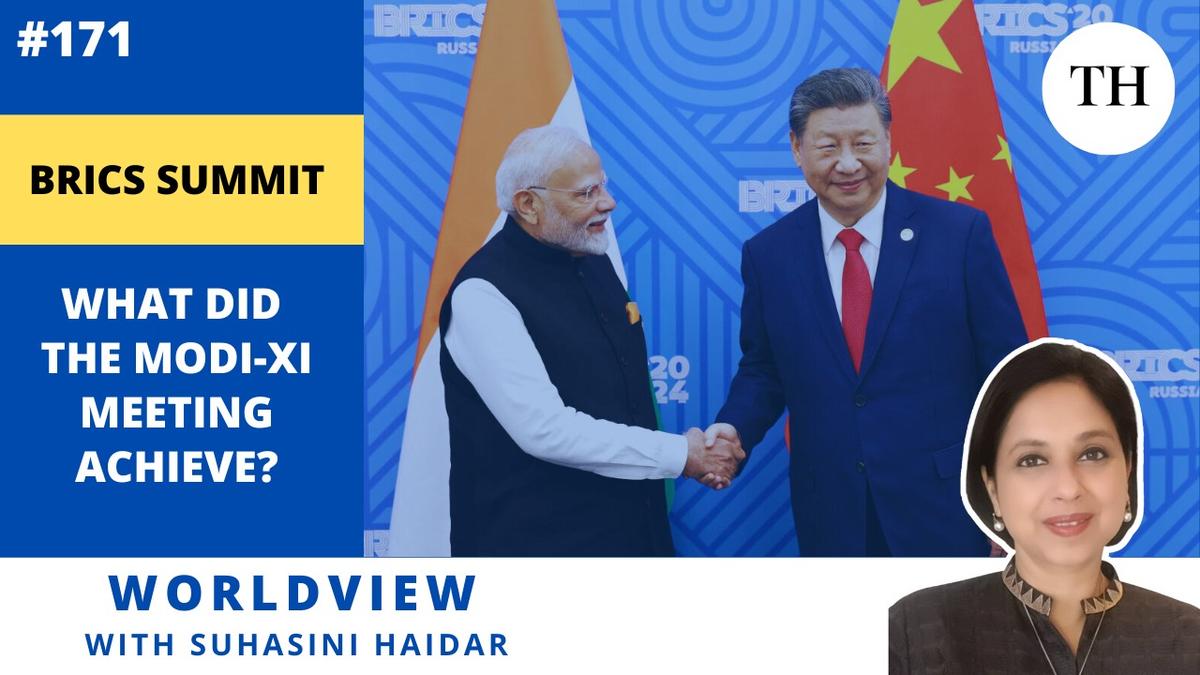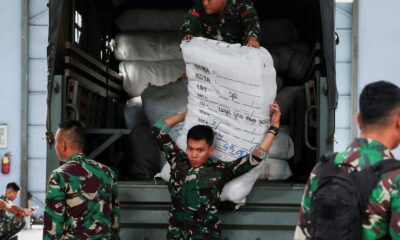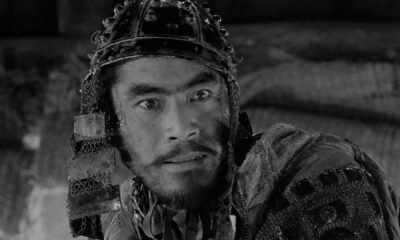The BRICS summit in Russia facilitated a breakthrough meeting between PM Narendra Modi and Xi Jinping.
The Ministry of External Affairs announced: “An agreement has been reached on patrolling arrangements along the Line of Actual Control in the India-China border areas, leading to disengagement and resolution of the issues that had arisen in these areas in 2020.”
Why was this meeting significant?
This marked their first meeting since 2019, when they had a 2-day retreat in Mamallapuram followed by a meeting in Brasilia at the BRICS Summit.
Prior to the 2020 standoff resulting from China’s transgressions at the LAC and India’s counter mobilisation, Modi and Xi had met 18 times in 5 years. The fact that they had not met formally in the past 5 years holds significance.
During the standoff, they informally spoke twice on the side-lines of summits in Indonesia and South Africa.
India has consistently maintained that “normal” ties, including summit meetings, can only resume once the LAC standoff is resolved.
At the conclusion of their meeting, India and China announced the following:
Patrolling will resume in the last two friction points of Depsang and Demchok, back to 2020 levels
Disengagement at the other 5 friction points had already taken place:
1. Galwan Valley in June 2020
2. Pangong Tso in February 2021 – Disengagement with a buffer zone created
3. Kailash Ridge heights in February 2021 – Indian troops climbed down
4. Gogra Post in August 2021: PP 17A – Disengagement with buffer zone
5. Hot Springs in September 2022: PP 15 – Disengagement with buffer zone
It was agreed that this marks the end of the disengagement process, and they will now focus on the next steps of de-escalation (thinning of troops) and de-induction (pulling back) to peace-time levels
Xi and Modi instructed the Special Representatives NSA Doval and Wang Yi, who is also a senior politburo member of the CCP, to meet and discuss the broader boundary dispute at an “early date”
They instructed Foreign Ministers Jaishankar and Wang Yi to meet soon to discuss restarting other dialogue mechanisms and to “rebuild ties”
The two sides will also address the next steps towards normalizing ties.
What are some of the steps that have been slowed or suspended in the past 4 years?
Travel links – direct flights were suspended due to Covid but were never resumed due to the border issue
Visas – there was a slowdown in the issuance of visas for businesspersons, students, etc.
Tourism has been virtually halted between the two countries
Journalists have been expelled from Delhi and Beijing, with only one Indian agency remaining in China
Investment restrictions and special scrutiny of any Chinese investment above 25%
Is peace on the horizon between the world’s two most populous nations? There are still some unanswered questions:
1. What steps or Confidence-Building Measures (CBMs) will the two armies take to ensure the disengagement is permanent? India’s terrain and infrastructure mean it would take longer to re-induct troops if needed in the future
2. Will the buffer zones, created to stabilize the border situation, be dismantled or maintained? If the buffer zones remain, how can the government claim they have restored pre-2020 levels?
3. How will India ensure there is not a repeat of the Doklam disengagement, where after an agreement to disengage from the friction point, the PLA intensified infrastructure development on the Doklam plateau, transforming grasslands into settled villages, bunkers, and helicopter bases?
4. Does India have clarity on what might have triggered the Chinese PLA’s aggressive actions in April 2020? If not, how can India be certain these actions will not lead to a new situation in the future?
The rush to a deadline for the BRICS summit certainly demonstrated that groupings like the BRICS are crucial forums as they provide a platform for bilateral resolutions. What were some of the other key takeaways from the Summit in Kazan:
With 10 BRICS leaders, 13 countries joining as BRICS Partners, and about 40 others attending the outreach with the global south, the Summit underscored that Russia and Mr. Putin are not isolated
A joint statement with 134 paragraphs included a strong criticism of Israel’s military offensive on Gaza and civilian casualties, while individual national positions varied on Russia’s war in Ukraine
BRICS focused on economic integration, including the use of BRICS nation currencies, BRICS Bank NDB, BRICS Interbank Cooperation Mechanism (ICM), BRICS Grain Exchange, BRICS Cross-Border Payment System, and BRICS Insurance Company
A push for reform of financial architecture like the IMF and World Bank, and global governance of the UN and Security Council
Bilateral opportunities included the introduction of Iran’s new President Pezeshkian amid the crisis in West Asia, and India-China talks
Worldview Take:
The announcement that a resolution to the India-China military standoff since 2020 is in sight is undoubtedly a positive development and a win for diplomats negotiating the outcome. What is crucial from this point onward is to observe transparency in the implementation of that resolution, and maintain vigilance and verification of actions on the ground. India has experienced setbacks in the past – trust between the two countries is the key to successful bilateral relations.
Reading Recommendations:
1. Understanding The India-China Border: The Enduring Threat of War in the High Himalayas by Manoj Joshi
2. India and China at Odds in the Asian Century: A Diplomatic and Strategic History by Vappala Balachandran
3. Contested Lands: India, China, and the Boundary Dispute by Maroof Raza
4. INDIA-CHINA BOUNDARY PROBLEM, 1846-1947 by A.G. Noorani
5. The Fractured Himalaya: India Tibet China 1949-62 by Nirupama Rao
6. The Long Game: How the Chinese Negotiate with India by Vijay Gokhale
Presentation and production: Suhasini Haidar
Editing: Shibu Narayan and Sabika Syed
Published – October 25, 2024 09:58 pm IST







































